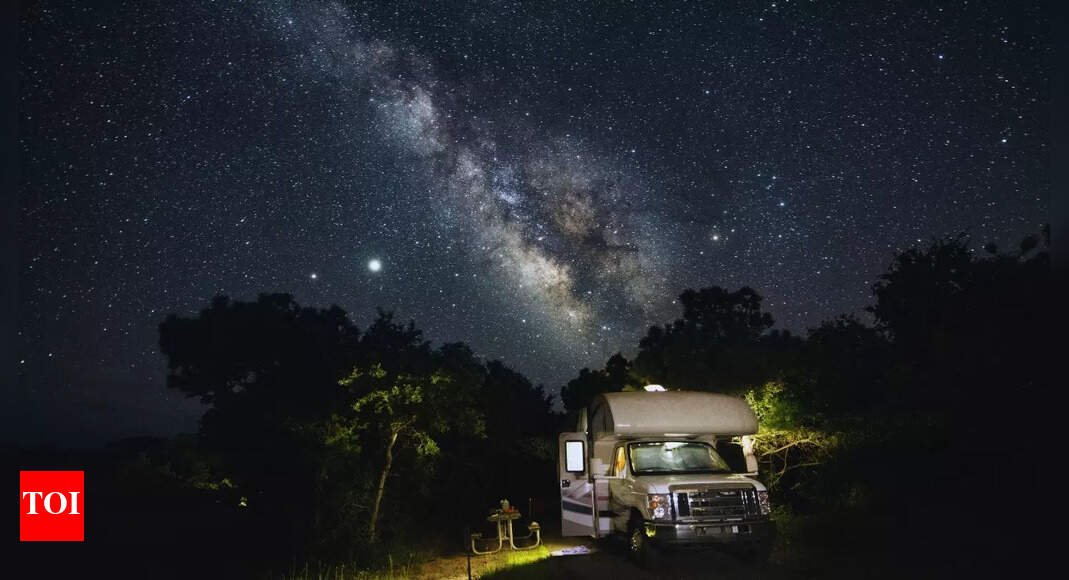Travel Guides & Articles
Puerto Rico Unites With Spain, South Africa, Chile, Greece, India, and Japan in Embracing New Eco-Friendly Travel to Curb Overtourism and Empower Rural Experiences

Sunday, July 20, 2025
Puerto Rico is now part of a movement — one that includes countries as diverse as Spain, South Africa, Chile, Greece, India and Japan — to embrace a next wave of sustainable travel to slow overtourism and give rural communities more power by forcing the spotlight off the crowded cities to focus more on sustainable experiences rooted in the local area. Now, as iconic places around the world grapple with the effects of mass tourism, these countries are promoting alternatives like agrotourism, nature experiences and cultural immersion as they work to safeguard the environment and raise up underserved areas of the country and offer travelers the opportunity to foster lasting, meaningful connections to the places they visit.
Puerto Rico’s Agrotourism Movement Gains Ground
With its booming tourism economy drawing millions of American visitors each year, Puerto Rico has long been known for its coastal escapes and colonial charm. But beyond San Juan and resort towns, a quieter revolution is taking shape. Agrotourism and rural eco-experiences are now flourishing across the island, led by local pioneers like Ingrid Rivas of Cabo Rojo and Ricardo Caraballo in Yauco.
Rivas runs Hacienda Tahiti Verde, a 25-acre dragon fruit farm that invites visitors to enjoy farm-to-table meals, rustic eco-lodging, and sustainability workshops—all built around principles of regenerative agriculture and zero waste. Her mission isn’t just to farm—it’s to reconnect people with the land, reduce environmental impact, and build long-term community resilience.
Meanwhile, Caraballo’s beekeeping tours in the mountains of Yauco showcase the ecological importance of pollination, blending environmental education with gastronomy as visitors taste local honey-based dishes. These off-the-grid experiences not only divert traffic away from Puerto Rico’s overtouristed hubs but also create opportunities for rural entrepreneurs and cultural preservation.
Spain: From City Protests to Rural Revitalization
Spain has been at the forefront of responding to overtourism, with major cities like Barcelona and Palma de Mallorca experiencing frequent protests and policy backlash over unchecked tourism. In response, regional governments have started incentivizing travel beyond the cities—toward olive groves in Andalusia, vineyards in La Rioja, and cheese farms in Asturias. This redirection aligns with Spain’s broader strategy to decentralize tourism and promote sustainable land use.
South Africa: Conservation Meets Community
In South Africa, eco-friendly tourism is deeply tied to conservation and community-led initiatives. Rural lodges, wildlife conservancies, and cultural villages in areas like Limpopo and the Eastern Cape offer immersive experiences that benefit local people and protect natural ecosystems. Programs focusing on ethical wildlife tourism and farm-based stays have gained popularity, particularly among travelers seeking more meaningful, low-impact adventures.
Chile: From Vineyards to Seaweed Farms
Chile is harnessing its diverse geography for rural tourism with initiatives like the “Ruta de los Abastos,” a trail that connects tourists with seaweed harvesters, beekeepers, winemakers, and indigenous food producers. These experiences not only support local livelihoods but also educate travelers on sustainable practices and traditional methods of food production, reinforcing cultural heritage and environmental care.
Greece: Rescuing Villages Through Green Tourism
Greece has made headlines for revitalizing rural villages through agrotourism. In areas like the Peloponnese and Crete, travelers can partake in olive harvesting, cooking classes, and vineyard visits while staying in restored stone cottages. Supported by government subsidies, these initiatives combat depopulation and provide economic alternatives to mass tourism in already saturated coastal zones.
India: Farming as a Tourism Experience
In India, states like Uttarakhand and Maharashtra are turning to agri-based tourism to both attract visitors and boost rural incomes. “Horticulture trails” and eco-farms allow urban travelers to participate in fruit picking, organic farming, and traditional cooking. With a large domestic tourism market, India’s rural eco-tourism sector is positioned for rapid growth and long-term sustainability.
Japan: Farmhouse Inns and Nature Immersion
Japan’s concept of “green tourism” has brought new life to the country’s declining rural towns. Places like Shunran-no-Sato in Ishikawa offer intimate farmhouse stays where guests engage in rice planting, foraging, and seasonal cooking. These initiatives not only promote environmental mindfulness but also preserve endangered cultural traditions and revive forgotten landscapes.
As overtourism continues to burden urban hotspots and natural landmarks, eco-friendly travel offers a much-needed solution—one that fosters sustainability, honors local culture, and unlocks the potential of rural destinations. Puerto Rico’s alignment with this growing global movement marks a hopeful step toward a more balanced and inclusive tourism future
Puerto Rico has joined Spain, South Africa, Chile, Greece, India, and Japan in embracing eco-friendly travel to reduce overcrowding in major tourist hubs and redirect visitors toward sustainable, rural experiences. This shift helps protect local ecosystems while empowering communities through agrotourism, cultural immersion, and low-impact adventures.
As the global travel industry recalibrates its future, Puerto Rico’s decision to follow the lead of eco-focused countries such as Spain, South Africa, Chile, Greece, India and Japan marks a significant pivot toward more sustainable, people-first travel. While reversing the urgent challenges of overtourism, these countries are investing in rural experiences and championing environmental balance, creating our industry’s most mature and sustainable model for travel that respects nature, rewards local economies and enhances the trips visitors take. This new way forward provides a roadmap for how destinations can flourish, by putting people, planet, and authenticity at the core of tourism.
Travel Guides & Articles
Beyond wildlife: India’s best nature trips to plan before 2025 ends |

The wildlife season is just around the corner, and we are excited about that. But this time, we are not here for that. For nature lovers, India’s diverse landscapes do not disappoint. Here we are looking at experiences beyond wildlife safaris, from lush valleys to serene backwaters. The winter months will provide perfect weather for exploring the outdoors. Here are eight exceptional nature trips across India to plan before the year ends.
Mawlynnong, Meghalaya
From Shillong Airport, Mawlynnong is located just 90 km. Also known as Asia’s cleanest village, Mawlynnong’s forests, waterfalls, and living root bridges are some of the best things you will experience in Northeast India. Not to forget, winter is the time when Dawki River (located just 30 km from Mawlynnong) is at it’s best form. Crystal clear water of Dawki River will leave you mesmerised. When in Mawlynnong, stay in village guesthouses. They are budget-friendly, and will let you have authentic traditional stay experience.
Dandeli, Karnataka
Located just 125 km from Goa Airport, Dandeli is nestled in the Western Ghats’ foothills. Its dense forests and Kali River offer adventure and serenity. Its flat terrain and riverine landscape are photogenic, perfect for the ‘gram.’ If you can, take out time to go rafting on the Kali River, or trek to Kavala Caves.Bhitarkanika National Park, OdishaLocated just 150 km from Bhubaneswar Airport, this mangrove ecosystem and wetland, spans 672 sq km. It offers serene boat rides through creeks and sightings of crocodiles and migratory birds. Bhitarkanika is a beautiful mix of wildlife and offbeat travel. Cruise through mangroves, spot estuarine crocodiles, or visit the Olive Ridley turtle nesting site at Gahirmatha.Gokarna, KarnatakaGokarna is located approximately 150 km from Goa Airport. It’s a quieter alternative to Goa. Gokarna’s pristine beaches and coastal cliffs offer a laid-back nature escape, far from the hustle and bustle of an over-crowded (and expensive) tourist trap. Here’s what to do in Gokarna: Relax on Om Beach, trek to Kudle Beach, or visit Half Moon Beach for solitude. The Mahabaleshwar Temple is a beautiful addition to your serene coastal holiday.
Travel Guides & Articles
Top 6 Places To Spot Black Panthers In India – Travel and Leisure Asia

Top 6 Places To Spot Black Panthers In India Travel and Leisure Asia
Source link
Travel Guides & Articles
Travel Drops 8% In June 2025

New Delhi: For the first time since 2001, excluding the Covid-19 years, the number of Indians visiting the United States has fallen as 2.1 lakh Indians travelled there in June 2025, which is an 8 per cent drop compared to 2.3 lakh in the same month last year, according to the US Commerce Department’s National Travel and Tourism Office (NTTO).
The downward trend seems to be continuing in July as well, with provisional data showing a 5.5 per cent decline compared to July 2024.
This slowdown is part of a broader global trend. NTTO data shows that overall international arrivals to the US also fell, with a 6.2 per cent drop in June, 7 per cent in May, 8 per cent in March, and 1.9 per cent in February.
Only January and April saw increases of 4.7 per cent and 1.3 per cent, respectively.
India continues to be the fourth largest source of international visitors to the US. Since Canada and Mexico share land borders with America, India ranks as the second largest overseas market after the UK, followed by Brazil in fifth place.
Together, these five countries contributed nearly 60 per cent of all international arrivals to the US in June.
Traditionally, Indian travellers to the US include students, business professionals, and those visiting friends and relatives.
Leisure travel to America has always been less popular compared to destinations like Southeast Asia, the Middle East, and Europe.
The current slowdown is being seen most clearly among students, though experts believe that business and family visits could also be affected if visa delays and constraints continue.
The Indian diaspora in the US is strong, with over 50 lakh people, which has generally ensured a steady flow of travel.
In fact, NTTO data shows that every June since 2001 had recorded higher numbers than the year before — until now.
April this year had been a positive month for Indian travellers overall, with 29 lakh people flying abroad.
The UAE was the top destination, followed by Saudi Arabia, Thailand, Singapore, and the US.
(Except for the headline, this article has not been edited by FPJ’s editorial team and is auto-generated from an agency feed.)
-
Tools & Platforms3 weeks ago
Building Trust in Military AI Starts with Opening the Black Box – War on the Rocks
-

 Business2 days ago
Business2 days agoThe Guardian view on Trump and the Fed: independence is no substitute for accountability | Editorial
-

 Ethics & Policy1 month ago
Ethics & Policy1 month agoSDAIA Supports Saudi Arabia’s Leadership in Shaping Global AI Ethics, Policy, and Research – وكالة الأنباء السعودية
-

 Events & Conferences3 months ago
Events & Conferences3 months agoJourney to 1000 models: Scaling Instagram’s recommendation system
-

 Jobs & Careers2 months ago
Jobs & Careers2 months agoMumbai-based Perplexity Alternative Has 60k+ Users Without Funding
-

 Funding & Business2 months ago
Funding & Business2 months agoKayak and Expedia race to build AI travel agents that turn social posts into itineraries
-

 Education2 months ago
Education2 months agoVEX Robotics launches AI-powered classroom robotics system
-

 Podcasts & Talks2 months ago
Podcasts & Talks2 months agoHappy 4th of July! 🎆 Made with Veo 3 in Gemini
-

 Podcasts & Talks2 months ago
Podcasts & Talks2 months agoOpenAI 🤝 @teamganassi
-

 Mergers & Acquisitions2 months ago
Mergers & Acquisitions2 months agoDonald Trump suggests US government review subsidies to Elon Musk’s companies





















